In Louisiana, everyone knows gumbo. Cajuns and creoles alike are raised on the rice-based dish filled with chicken, sausage, crawfish, and shrimp; and many share generations’ worth of memories of their respective grandmothers stirring up these ingredients in large metal pots on well-loved kitchen stoves. Few among us, though, know the dish’s origins, which stretch back across the centuries and the Atlantic to the west coast of Africa.
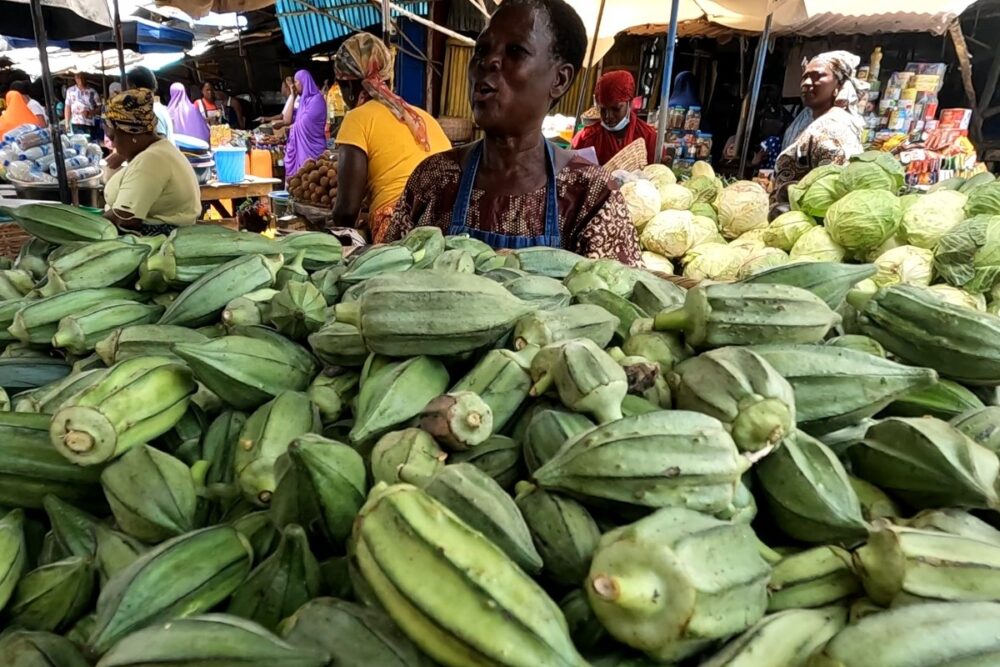
The original gombo for sale in Benin (Photo: Jody Ray)
I had been told how in the second half of the 1600s, slaves from Togo and Benin smuggled a vegetable called gombo with them across the Atlantic, and how until that point, this plant, which we call okra, had never grown in the Americas before.
But how had this vegetable been used in Africa that it should end up lending its name to the Southern stew? As a Louisiana native, travelling through West Africa, I was keen to find out.
Driving from Togo into Benin was difficult, involving a bribe of thirty American dollars. Even with Jean Paul, a Beninese citizen who helped me through the ins and outs of the crossing, I was put through the ringer of suspicion.
Fortunately, this gave me time to express my curiosity about gombo to Jean-Paul, and he confirmed that it was still used in Benin as the base of something very similar to the Louisiana gumbo, and suggested his mother might be willing to cook us her version of the dish – provided I purchase the ingredients, of course. It was an offer I couldn’t refuse.
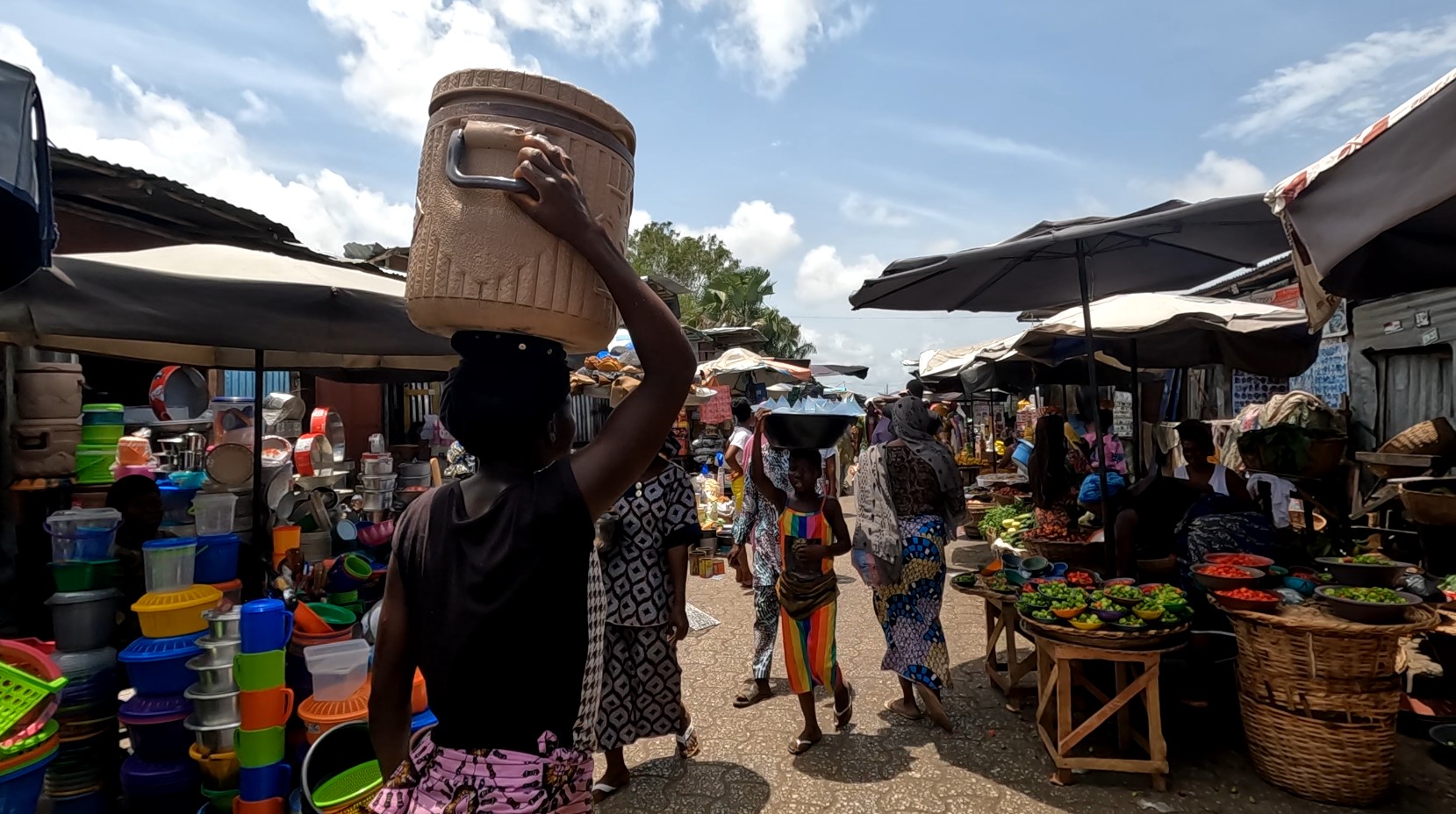
Dantokpa: the largest open-air market in West Africa (Photo: Jody Ray)
The next day, I found myself in Dantokpa market in Cotonou, Benin’s largest city. Alongside Jean-Paul and his mother, we wound through shoppers and vendors alike — goats and children scurrying around our legs. We scouted spices and fish, dried shrimp and crab, and haggled prices (an expected practice among the Beninese, who taught me how to do it with gusto). The market is the largest in all of West Africa, and that day it was busy with thousands of people who all seemed to have dinner on the brain.
People moved through the market alleys with the tight insistency of cells in a bloodstream. It was impossible to find a moment to speak with any them properly. The noise was too loud, the heat too sweltering; I could only get my produce and go. Then I saw it. Rows of makeshift wooden tables under worn tarp, and on them overflowing baskets of West African gombo, to which I was immediately drawn.
I grabbed a handful of the sticky, prickly vegetable to lift to my nostrils, my infatuation bewildering some nearby young women. Why on Earth was this white man holding okra up to the sun, rotating it on each axis, filming it with a GoPro?
“Look at this man! He must really like gombo,” one girl said in French as I filmed.
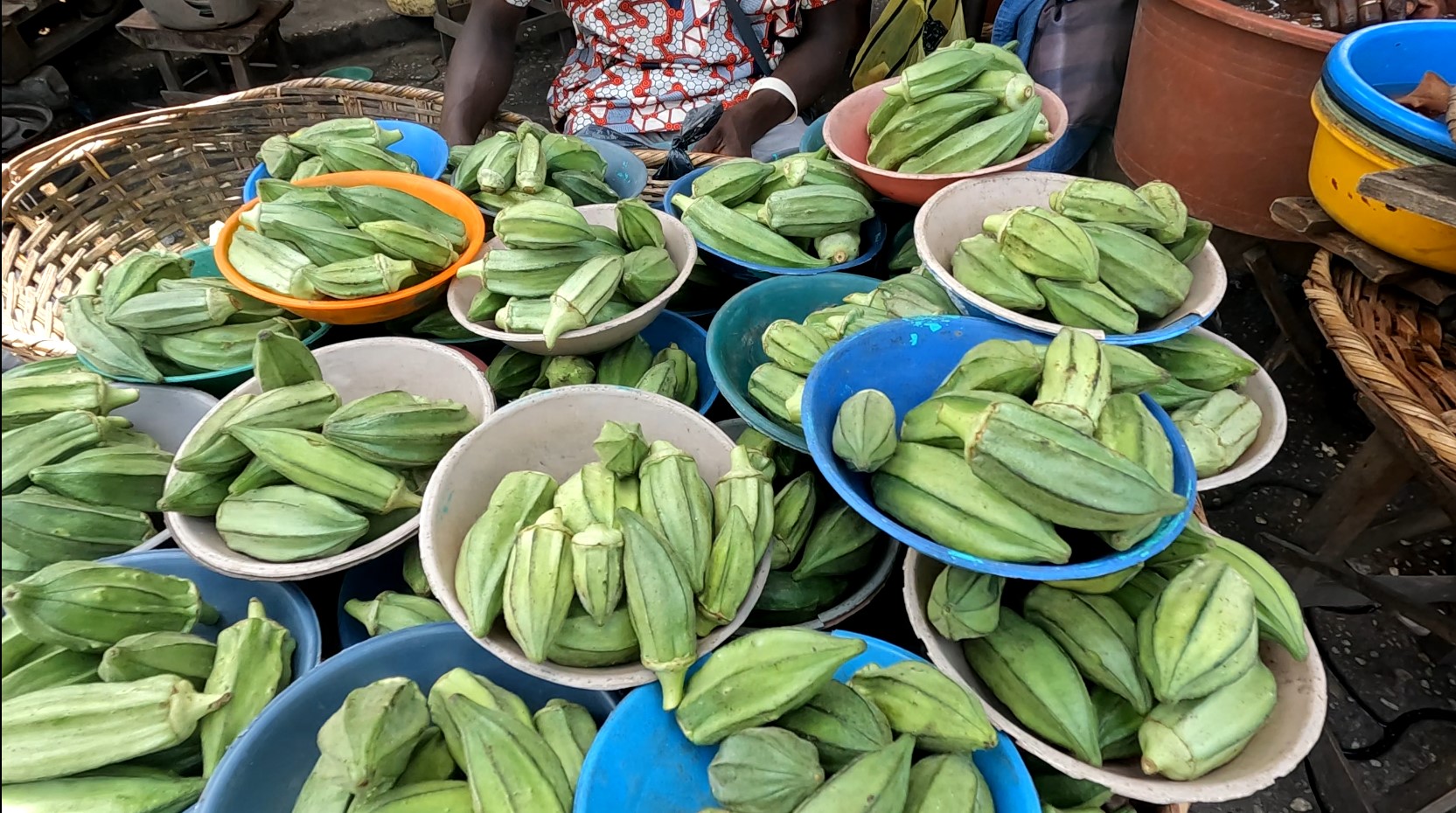
Pots of gombo (Photo: Jody Ray)
In Benin, though, I was to learn that gombo is a big deal. It is the cornerstone ingredient of every stew made throughout West Africa. It is sliced and poured into pots by the pound so that it thickens into an almost gooey base. It becomes condensed, green, and slimy, seeping in and around the crevices of every other ingredient: fresh fish, salted fish, shrimp, dried shrimp, crab meat, onions, peppers, tomatoes, chilies, cow skin, and cheese. Yes, even cheese – cubed portions of hardened curd that don’t exactly melt, but become coated in the green okra ooze. And though it may not sound it, it’s utterly delicious; I promise!
To begin a West African stew, palm oil is heated over a flame, coating the bottom of the pot. Ground spices and then a fish and shrimp puree is added, creating a gravy that will eventually hold all of the other ingredients. Big chunks of fish meat, crab, and shrimp are added to boil in the gravy, cooking down before being topped with enough sliced okra to give the entire pot a green tint. The okra thickens in the pot long enough to draw from a spoon the way cheese might string from a hot slice of pizza. The okra/gombo defines the dish in such a way that it’s obvious how the vegetable’s name might have become short hand for the stew itself.
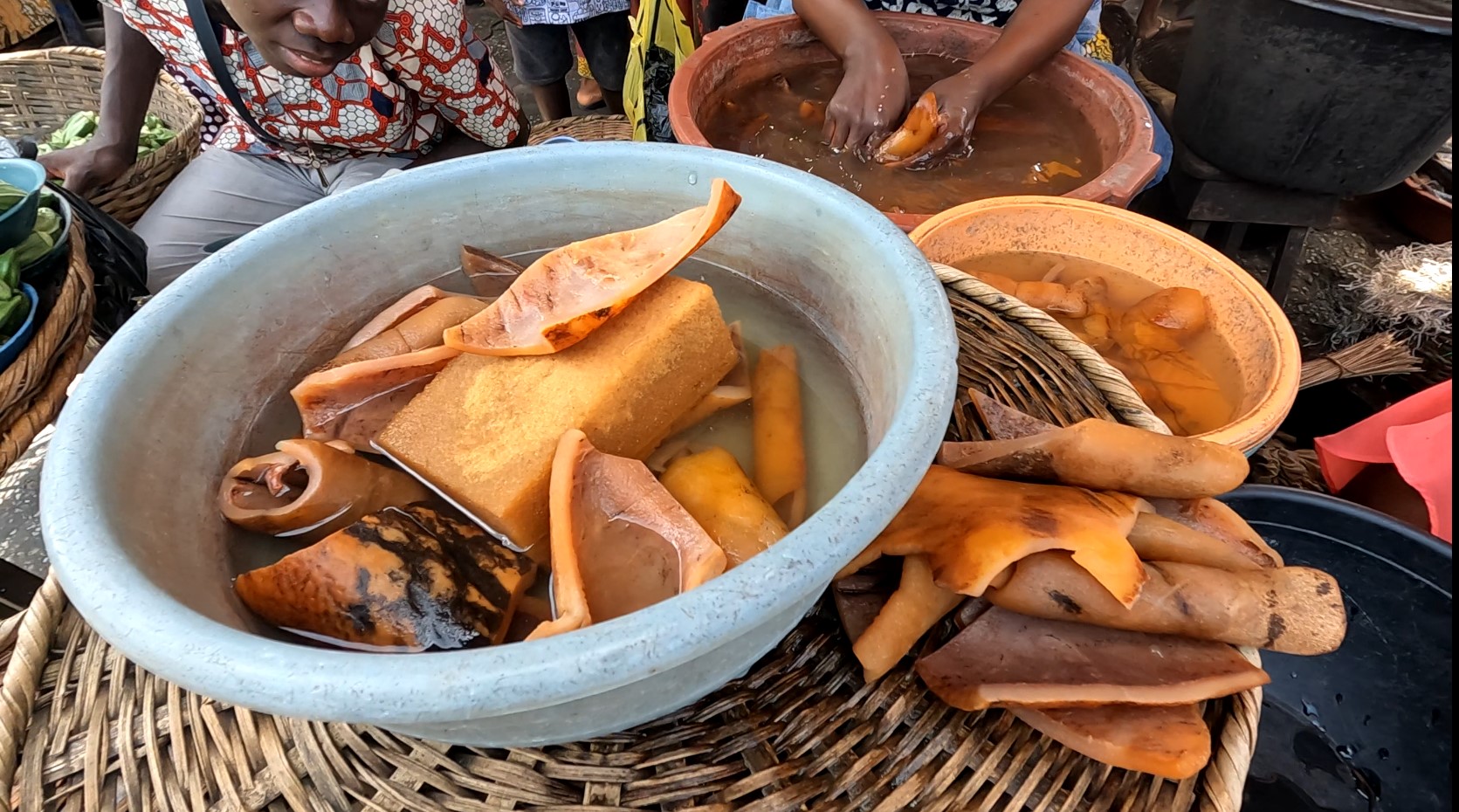
Cow skin: not such a Louisianan ingredient (Photo: Jody Ray)
In a Louisiana gumbo, okra isn’t exactly used this way. It’s not a cornerstone of the stew, nor is it used to thicken the broth (in fact, we go to some lengths to keep the okra from overcooking). Louisiana gumbo is thickened by creating a roux, a practice brought to Louisiana by the French that involves the consistent mixture of flour and fat (usually butter) to create a base. Dried and ground sassafras grown by Native Americans was also thrown in to further season and colour the dish.
Various ingredients from different peoples and cultures mixed in one large pot is what gave way to the word “gumbo” taking on a second (third?) meaning that refers to a hodge-podge or mash-up; a celebration of the mixture that ends up becoming something else entirely.
Louisiana gumbo will contain chicken or sausage, or shrimp and crabmeat – it’s rare to find a mix, but some do prepare gumbos with all of the proteins. Okra is then sliced into thin cylinders and added mid-boil. There’s still an extensive ongoing debate on whether a Louisiana gumbo should contain any form of tomato.
Finally, Louisiana gumbo is always served over a scoop of rice, where its thicker West African counterpart is sopped up with fufu, an almost flavorless sticky dough made from mixing cassava, sweet potato (West African yam), plantain, flour, and water. Small pieces of dough are pulled from a larger portion with the fingers, and then used to grab pieces of fish, shrimp, and crab that have been coating in okra and spices. No spoon necessary.
For the African dish, fufu is required because the stew is so thick that rice would just get caught up in the jelly-like sauce with the rest of the ingredients. Louisiana gumbo runs thinner, so rice is the better carbohydrate to soak up the spicy gravy made from the roux.
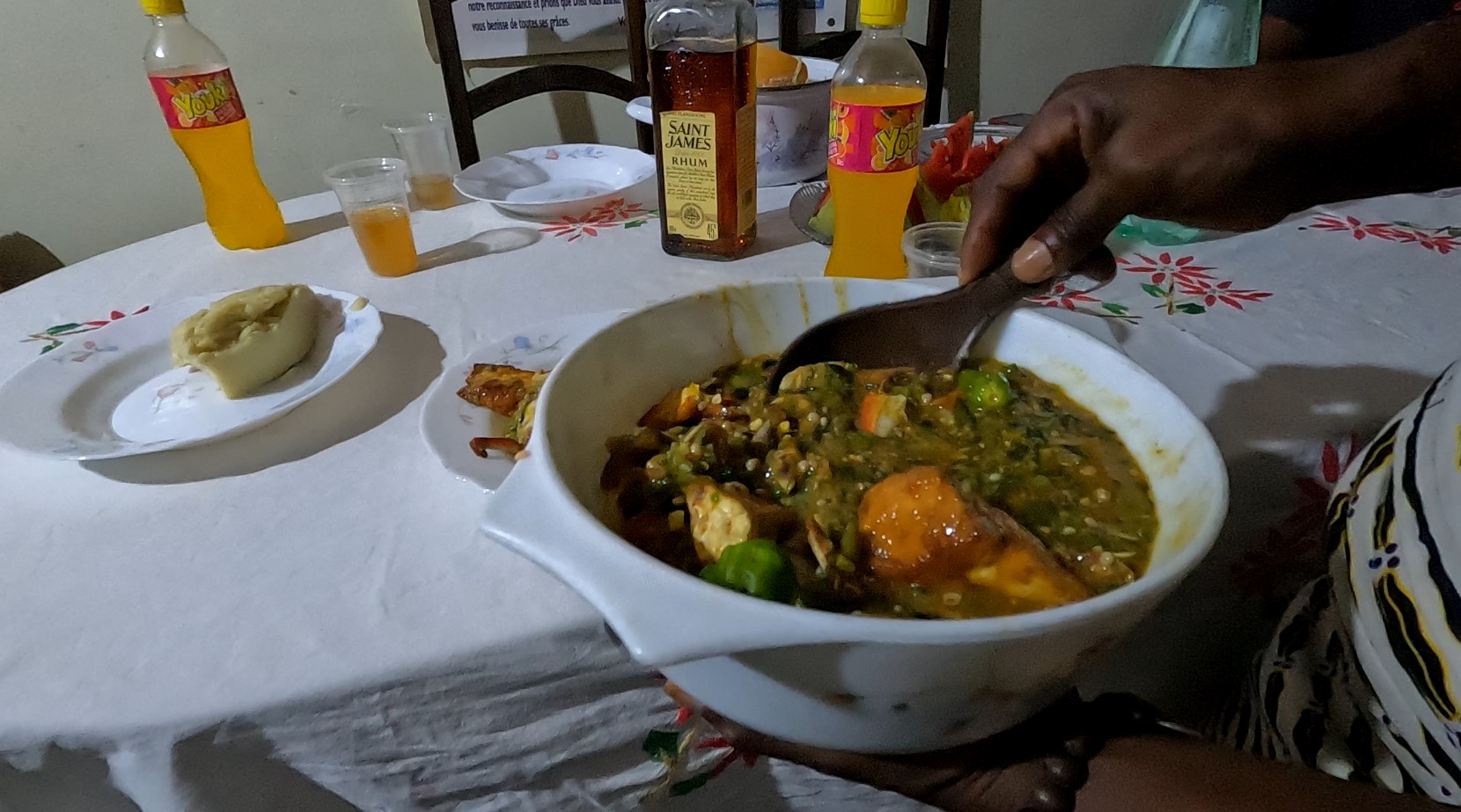
The final product (Photo: Jody Ray)
Back in Dantokpa, Jean Paul’s mother sat me at her dining room table and Jean-Paul and his siblings joined us. We drank local rum and toasted to new friendship, eventually passing around a bowl of fufu for everyone before the main dish arrived. From behind a curtain that covered the entrance of her kitchen, she appeared with a large white bowl and ladle in hand.
As she spooned it out, the thickened okra stuck to the ladle, and spice-covered fish, crab, and shrimp slowly cascaded down into my plate. I took a piece of fufu with my fingers and scooped up the first bite and paid silent homage to the men and women before me who started this recipe hundreds of years ago, a recipe I was only able to appreciate through the most horrific of circumstances. But it was good to be at this family’s table, it was good to toast and laugh over dinner, and it was good to finally taste the first gumbo that started it all.